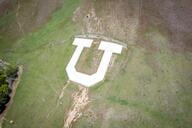You have /5 articles left.
Sign up for a free account or log in.
Over the last five years, more doctoral students in political science have started their job searches before finishing their Ph.D.s -- and the result appears to be a decline in the percentage of new placements who are landing faculty jobs (on or off the tenure track).
That is a key finding of preliminary analysis of a new placement survey by the American Political Science Association. Unlike many disciplinary studies of the academic job market, which are based on job listings, the APSA analysis is based on jobs obtained by graduate students who go on the job market to look for their first academic or post-Ph.D. jobs. The data from the new study are from those who did searches in the 2014-15 academic year. The APSA collects the information from graduate departments.
There are modest declines over the last five years in the percentage of ABDs and Ph.D.s obtaining both tenure-track and non-tenure-track jobs. And there is a significant gain over the five years in the percentage of job candidates who report that they were not placed, and an overall decline in the share of candidates who ended up in faculty jobs.
But the declines in faculty job placements and increases in the proportion not being placed are largely trends that affect those who are ABD. The experience for Ph.D.s is more stable.
Placement by Degree Status in Political Science
| Tenure Track | Non-Tenure Track | Postdoc | Nonacademic | Not Placed | |
| 2009-10 | |||||
| -- All | 41.8% | 21.1% | 16.1% | 10.3% | 9.2% |
| -- Ph.D. | 43.6% | 21.4% | 15.6% | 11.1% | 6.7% |
| -- ABD | 24.7% | 18.8% | 21.3% | 2.2% | 33.7% |
| 2010-11 | |||||
| -- All | 37.4% | 23.1% | 14.2% | 8.6% | 13.5% |
| -- Ph.D. | 40.8% | 24.5% | 13.0% | 10.3% | 8.6% |
| -- ABD | 30.0% | 19.1% | 18.0% | 4.9% | 26.2% |
| 2011-12 | |||||
| -- All | 38.3% | 20.8% | 10.1% | 10.0% | 17.8% |
| -- Ph.D. | 38.5% | 21.4% | 10.4% | 11.1% | 14.0% |
| -- ABD | 38.2% | 18.8% | 8.5% | 7.8% | 26.6% |
| 2012-13 | |||||
| -- All | 34.7% | 20.7% | 14.4% | 10.0% | 15.4% |
| -- Ph.D. | 40.7% | 19.6% | 14.5% | 11.0% | 9.7% |
| -- ABD | 20.1% | 23.7% | 14.8% | 7.2% | 30.9% |
| 2013-14 | |||||
| -- All | 34.2% | 21.8% | 13.6% | 9.9% | 17.1% |
| -- Ph.D. | 38.8% | 19.5% | 13.8% | 12.4% | 11.9% |
| -- ABD | 22.3% | 27.7% | 13.5% | 3.6% | 30.3% |
| 2014-15 | |||||
| -- All | 33.1% | 18.2% | 17.0% | 12.1% | 16.8% |
| -- Ph.D. | 39.0% | 19.8% | 14.8% | 13.7% | 9.6% |
| -- ABD | 22.0% | 15.5% | 22.0% | 9.0% | 31.6% |
As the above numbers show, Ph.D.s have always had a better shot than ABDs at landing faculty jobs. But the reason the shifts in the "all" category are so significant is that the percentage of the overall pool of those on the job market now includes many more ABDs. In 2009-10, ABDs made up 9.4 percent of the market, while in the most recent analysis, they make up 33.1 percent of the total.
For all placement categories except for non-tenure-track faculty, the largest area of specialization was comparative politics. For non-tenure-track positions, the largest area of specialty was American politics.
In terms of the demographics of the candidate pool, the survey results suggest that colleges and universities may have a difficult time finding nonwhite candidates in political science. From 2009-10 to 2014-15, the percentage of the candidates on the market who were white increased from 57.0 to 63.3 percent. The percentage who were African-American fell from 3.2 percent to 1.8 percent. The share for Asians and Latinos was up modestly. But the share from outside the United States dropped, from 29.6 to 22.6 percent.




